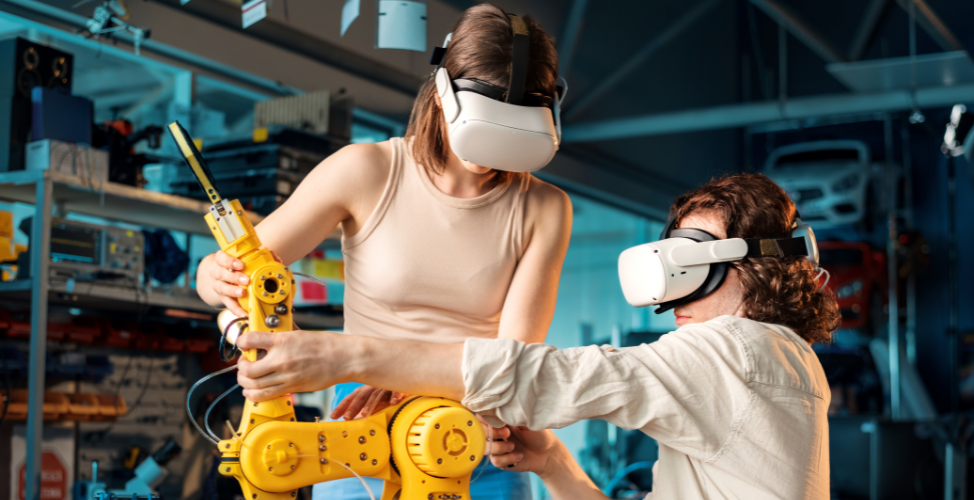The Future of Automotive Software Development: AI, IoT & Cloud Integration
The automotive industry is undergoing a major transformation, driven by rapid advancements in AI, IoT, and cloud integration. As vehicles become smarter and more connected, the role of software in delivering performance, safety, and personalized user experiences is more critical than ever. From real-time diagnostics and predictive maintenance to autonomous driving and seamless infotainment systems, automotive software development is evolving at an unprecedented pace. In this blog, we explore how emerging technologies are shaping the future of mobility and what automakers need to embrace to stay ahead in this dynamic landscape.

The Current State of Automotive Software Development
The automotive industry is undergoing a radical transformation, driven by the exponential growth of software within vehicles. Today’s cars are no longer just mechanical marvels; they are sophisticated digital platforms powered by complex software systems. It’s estimated that modern vehicles can contain over 100 million lines of code, managing everything from engine performance and safety systems to infotainment and connectivity features. As the industry continues to innovate, the software footprint within vehicles is expected to increase dramatically.
The Exponential Growth of Software in Vehicles
In recent years, the integration of advanced technologies such as artificial intelligence (AI), the Internet of Things (IoT), and cloud computing has exponentially increased the complexity and scope of automotive software development. The rise of software-defined vehicles (SDVs) marks a fundamental shift from hardware-centric designs to flexible, upgradable software platforms. This shift enables manufacturers to introduce new features and updates throughout a vehicle’s lifecycle, fostering long-term value and customer engagement.
Key Software Components in Modern Vehicles
Modern vehicles rely on various software components to operate efficiently and safely. These components include Advanced Driver Assistance Systems (ADAS), infotainment systems, vehicle control units, and communication modules. Together, they ensure seamless operation and connectivity, delivering a unified driving experience. With each new model, manufacturers are incorporating even more complex software elements, pushing the boundaries of innovation.
Artificial Intelligence in Automotive Software
Artificial intelligence (AI) is at the heart of modern automotive software innovation. It enhances vehicle functionality, safety, and user experience by leveraging data-driven insights and automation. From autonomous driving to predictive maintenance, AI applications are reshaping the automotive landscape.
AI Applications in ADAS and Autonomous Driving Systems
Advanced Driver Assistance Systems (ADAS) and autonomous driving technologies are among the most transformative AI applications in automotive software. Key applications include:
- Adaptive Cruise Control (ACC): Uses AI algorithms to maintain a safe distance from the vehicle ahead.
- Lane Departure Warning (LDW): Detects lane markings and alerts the driver when drifting occurs.
- Automated Parking Systems: Utilize AI for precise and safe parking maneuvers.
- Collision Avoidance Systems: Predict and respond to potential collisions using data from sensors and cameras.
These AI-driven systems significantly enhance driver safety, reduce human error, and lay the foundation for fully autonomous vehicles. Companies like Tesla, Waymo, and BMW are leading the charge with innovative AI-powered solutions.
Read more: 15 eCommerce Marketing Automation Software to Enhance Growth
Machine Learning for Predictive Maintenance and Vehicle Diagnostics
Machine learning (ML) is pivotal in enabling predictive maintenance, allowing automotive systems to anticipate and address issues before they escalate. By analyzing real-time data from sensors and onboard systems, ML models can detect anomalies and predict component failures. Key applications include:
- Engine Health Monitoring: Predicts potential breakdowns by analyzing temperature, pressure, and vibration data.
- Battery Life Prediction: Uses data patterns to estimate battery health and suggest replacements.
- Brake Wear Analysis: Continuously monitors brake system performance to ensure safety.
- Transmission Performance Tracking: Detects shifting irregularities and potential transmission failures.
By integrating ML into automotive software, manufacturers and fleet operators can minimize downtime, enhance safety, and optimize maintenance schedules.
Internet of Things (IoT) Connectivity
The Internet of Things (IoT) plays a crucial role in modern automotive software by enabling seamless communication between vehicles and the digital ecosystem. IoT connectivity is driving the future of smart, interconnected cars.
Vehicle-to-Everything (V2X) Communication
V2X communication refers to the comprehensive framework where vehicles communicate with various entities, including other vehicles (V2V), infrastructure (V2I), pedestrians (V2P), and networks (V2N). Key applications include:
- Collision Avoidance: Real-time data sharing between vehicles to prevent accidents.
- Traffic Signal Coordination: Synchronizes vehicle movements with traffic signals to optimize flow.
- Pedestrian Safety Alerts: Detects pedestrians and sends alerts to both drivers and nearby vehicles.
Connected Car Ecosystems and Applications
Connected cars leverage IoT to offer a wide range of services, from real-time diagnostics to enhanced infotainment. These ecosystems provide drivers and passengers with smarter, safer, and more enjoyable experiences. Key features include:
- Remote Monitoring and Control: Vehicle owners can monitor status and control features via mobile apps.
- Smart Navigation and Route Optimization: Real-time traffic updates to minimize travel time.
- Vehicle Health Monitoring: Alerts about maintenance needs and performance issues.
Cloud Integration in Automotive Software
Cloud computing has transformed automotive software development, offering scalable and agile solutions for data processing, software updates, and system management. Integrating cloud technology enhances performance and allows for real-time updates.
Cloud-Based Development Environments for Automotive Software
Cloud environments enable developers to build, test, and deploy automotive applications with ease. Benefits include:
- Collaborative Development: Real-time collaboration among distributed teams.
- Continuous Integration and Deployment (CI/CD): Automates testing and deployment processes.
- Scalability and Flexibility: Adjust resources as needed to support development demands.
Read more: Crafting Seemless Experiences: Top 5 Web Application Development Services
Over-the-Air (OTA) Updates and Continuous Improvement
OTA updates enable manufacturers to push software improvements directly to vehicles without requiring a visit to the dealership. This capability ensures that vehicles remain up-to-date with the latest features and security patches. Key advantages include:
- Security Enhancements: Address vulnerabilities swiftly to maintain vehicle safety.
- Performance Upgrades: Implement new features and optimize existing functionalities.
- Cost Efficiency: Reduce maintenance costs by minimizing the need for physical interventions.
Let SmartOSC Drive Your Automotive Software Development into the Future
SmartOSC offers cutting-edge solutions to enhance your automotive software development journey. With expertise in AI, IoT, and cloud integration, our team empowers automotive businesses to innovate and excel. From smart vehicle connectivity to cloud-powered data management, we ensure that your digital transformation is seamless and impactful.
Partner with SmartOSC to stay ahead of the competition and unlock the full potential of modern automotive software development. Our tailored solutions and expert guidance will help you navigate the complexities of the automotive digital landscape.
Conclusion
The future of automotive software development lies in the integration of AI, IoT, and cloud technologies. As vehicles become more intelligent, connected, and software-driven, businesses must adopt agile, future-ready platforms. Choosing the right development strategy will ensure long-term success and sustained innovation in the ever-evolving automotive industry. Contact us today!


